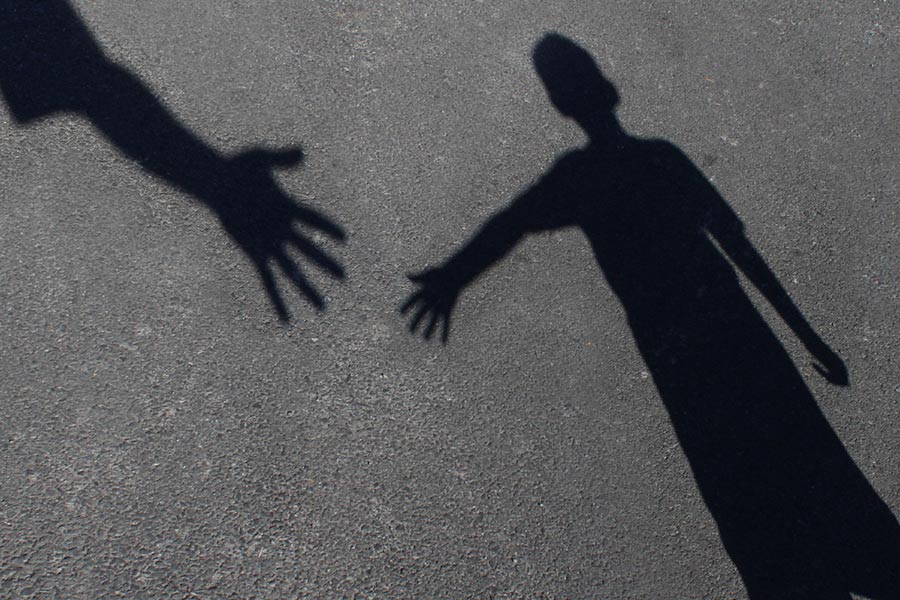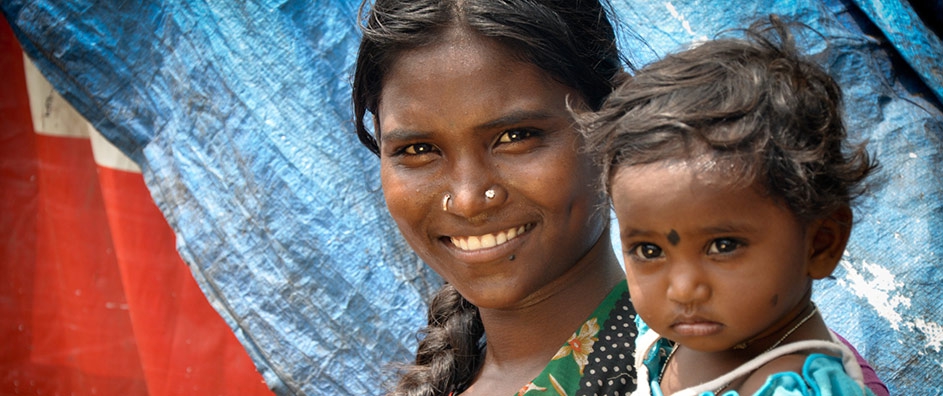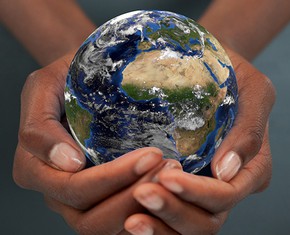The views expressed in our content reflect individual perspectives and do not represent the authoritative views of the Baha'i Faith.
Let us be ready to give our lives, our fortunes, positions, achievements, in order that a new state of existence may be diffused throughout the earth. There are fellow-beings who are weaker than we are, let us strengthen them; there are those who are more ignorant, we must teach them; some are as children, help them to develop; many are asleep, awaken them; others are ill, heal them; never despise them. Be kinder to them than to the stronger ones. One must always be kinder to the weak and ill and to the children. – Abdu’l-Baha, Divine Philosophy, pp. 97-98.
The ultimate kindness to children? Give them the chance to live through their childhood. Every minute in today’s world, eleven children under the age of five die from causes we could prevent.
In fact, child mortality, for the most part, is intensely preventable. The vast majority of children who don’t live until the age of five die from four main causes—diarrhea, malaria, malnutrition and pneumonia. In the UN’s Millennium Development Goals, nations agreed to try to reduce child mortality by two-thirds—primarily because public health experts estimate that we could save that many children with easily-available, inexpensive and low-tech interventions. Vaccinations, antibiotics, oral rehydration therapy, proper feeding and breastfeeding, and insecticide-treated bednets would save eight million children every year.
Did the MDG’s achieve that two-thirds goal? Not quite. The number of deaths of children under five, however, have dropped precipitously, from 12.7 million a year in 1990, to less than six million in 2015. In aggregate, the world’s altruistic, humanitarian efforts saved the lives of almost seven million children last year—by any measure a huge and unprecedented success, dropping the global child mortality rate to its lowest recorded percentage in human history:
The global under-five mortality rate has declined by more than half, dropping from 90 to 43 deaths per 1,000 live births between 1990 and 2015.
Since the early 1990s, the rate of reduction of under-five mortality has more than tripled globally.
In sub-Saharan Africa, the annual rate of reduction of under-five mortality was over five times faster during 2005–2013 than it was during 1990–1995.
Measles vaccination helped prevent nearly 15.6 million deaths between 2000 and 2013. The number of globally reported measles cases declined by 67 per cent for the same period.
About 84 per cent of children worldwide received at least one dose of measles-containing vaccine in 2013, up from 73 per cent in 2000. – from the UN’s MDG 2015 Report.
These are staggering statistics, but they’re even more impressive when you look at them this way: in 2015, 19,000 fewer children died per day than in 1990. Since the year 2000, when the MDGs took effect, the world has collectively saved the lives of almost 50 million children. One commentator, Angus Hervey at FutureCrunch, noted that this is “one of the most astonishing news stories of our time, and yet it was outnumbered 100-1 by stories on terrorism.”
We’ve made enormous progress in eradicating childhood deaths from diseases like polio and malaria, too. Around the world, 438,000 people died of malaria in 2015—compared to 839,000 in 2000. Polio, now gone from every country but Afghanistan and Pakistan, could be entirely wiped out in a decade.

And what about hunger and starvation? About one in nine people on Earth currently experience chronic hunger, and malnutrition underlies more than half of child mortality. Since 1990, however, the world’s governments, NGOs and volunteer agencies managed to cut the overall percentage of the chronically hungry almost in half, from the previous level of one in five people a quarter-century ago. We accomplished that tremendous feat during the same period the world’s population increased by almost two billion people. Give yourselves a rousing round of applause, world.
Experts have concluded that these kinds of rapid advances in reducing child mortality accomplish more than saving the lives of children. They also help familial average income increase; and they cause the the average fertility rate to decrease. In places where children survive and grow to maturity, mothers and fathers actually end up having fewer children. It seems counter-intuitive, but increasing the child survival rates actually lowers overall population growth.
Sit back for a moment and contemplate this incredible human achievement. Through a unified plan and set of goals at the international level, we have determined to save our children, no matter where they’re born, and we have, through our joint efforts, actually saved fifty million.
The conclusion is inescapable. We now know that the “new state of existence” Abdu’l-Baha encourages us to diffuse throughout the Earth can actually happen. It is not a dream, or an empty wish, or a do-gooder’s illusion. Within the next generation, if we put our minds to it, we could conceivably wipe out child mortality, disease and starvation. Can you imagine it?
Next: The Triple Tragedy of Maternal Mortality
















Comments
Sign in or create an account
Continue with Googleor